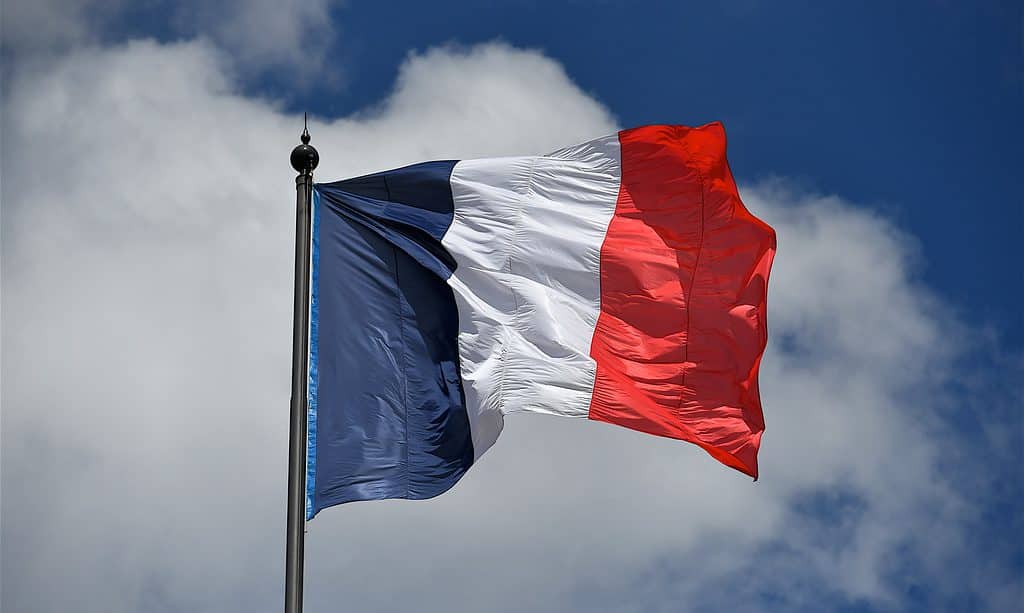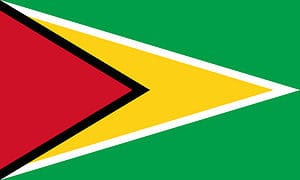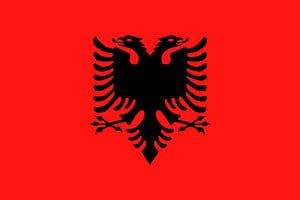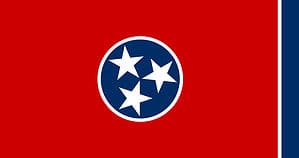Major tourist destinations in France include fantastical castles, magnificent towers, and lovely towns. This attractive nation on the western edge of Europe is renowned for its high-end cuisine, wines, and clothing. Simply put, France is the world’s representation of romance and love. France is a country in Western Europe with Mediterranean beaches, alpine villages, and historic capitals. Its busiest metropolis, Paris, is renowned for its designer boutiques, classical art museums like the Louvre, and landmarks like the Eiffel Tower.
Yet, with France’s stunningly complex cities and tourist attractions, its flag may not be an eye-catcher at first – not until you learn the history, symbolism, and meaning behind the creation of the country’s official banner. So, what does the tri-colored flag of France mean? Below, we will uncover everything you need to know about the French flag’s history, meaning, symbolism, and other interesting facts.
The French Flag’s Design
The French flag has three vertical stripes that are blue, red, and white. Although not the original tricolor, the design was patterned after the French Revolution and evolved to be among the most significant in history. Many other countries in Europe and beyond later adopted the tricolor pattern, which has stood “in symbolic opposition to the autocratic and clericalist royal standards of the past,” as stated by Encyclopedia Britannica.
The French flag is the country’s national emblem, as declared in the 1958 French constitution. The flag is defined as being “tierced in pale azure, argent, and gules” in English blazon.
Traditionally, the blue band was a deep navy blue. However, President Valéry Giscard d’Estaing changed it to a lighter shade of blue (and red) in 1974. Since then, both forms have been in use; buildings used by the public, town halls, and barracks often use the darker version of the flag. However, official state facilities have occasionally flown the lighter version.
Today, the flag’s width exceeds its height by 1.5 times. The flag’s three stripes, which aren’t the same width, have a ratio of 37:33:30, with the red stripe as the largest.
Symbolism and Meaning of the French Flag

The white stripe originates from the original French flag, while the red and blue stripes are from the coat of arms of Paris.
©iStock.com/Olivier DJIANN
The French flag, despite its simplicity, has many meanings. The flag has blue, white, and red vertical stripes. The white stripe originates from the original French flag, while the red and blue stripes are from the coat of arms of Paris.
Paris’ coat of arms features the traditional colors of the city, which are red and blue. Saint Martin is associated with blue, and Saint Denis with red. The militia rosette’s “revolutionary” colors were “nationalized” by the addition of white, creating the cockade of France.
The three principal estates of the Ancien Régime may also be represented by the colors of the French flag (white for the clergy, red for nobility, and blue for the bourgeoisie). Red, which stands for nobility, is placed last, and blue, which represents class, is placed first. On either side of the white color, the two extreme colors signify a higher hierarchy.
The History of the French Flag
The three colors were initially combined in the shape of a cockade during the early years of the French Revolution. By July 1789, soon before the Bastille was taken, there was intense unrest in Paris. A militia was organized, with its emblem being a two-colored cockade constructed of the traditional Parisian hues of red and blue.
On July 17th, the blue and red cockade was shown to King Louis XVI at the Hôtel de Ville, where the Commander of the Guard, Marquis de Lafayette, urged that the design be “nationalized” by including a white stripe. The tricolor cockade was made a part of the National Guard’s uniform on July 27th, replacing the militia as the country’s police force.
The “tricolore” became the country’s official flag on February 15th, 1794. The legislation required that the blue flag be flown closest to the flagstaff, per the advice of the painter Jacques-Louis David.
During the Revolution of 1848, the interim government used the “tricolore,” but the people manning the barricades waved a red flag in protest. A consensus centered on the three colors eventually developed during the Third Republic. Every July 14th since 1880, presenting the colors to the armed troops has been a source of intense patriotic emotion. The Comte de Chambord, who sought the French monarchy, never acknowledged the “tricolore,” but when the First World War broke out, the royalists came together behind it.
The French Flag Today
The “blue, white, and red” flag was established as the Republic’s national crest in Article 2 of the constitutions of 1946 and 1958.
Today, all governmental structures fly the French flag. It is honored in accordance with a very well-defined ceremony and flown on special national occasions. When the French President addresses the public, the French flag commonly serves as the backdrop. It can be flown with the European flag or the flag of another nation, depending on the situation.
The Two Faces of the French Flag
Since 1976, the French government has used two versions of the national flag in differing degrees: the original (distinguished by its usage of navy blue) and one with a paler blue color. The older version has been the default throughout France since 2020, including at the Élysée Palace. The French flag’s stripe was originally navy blue, but in 1976 it was modified to a lighter shade to match the European Union’s blue flag. Valéry Giscard d’Estaing, the president at the time, made this choice.
The national flag used by the French Second Republic, Provisional Government of the French Republic, Second French Empire, French Third Republic, French State, French Fourth Republic, and the French Fifth Republic is a vertical tricolor of a darker blue, white, and red. This was initially adopted on February 15th, 1794.
From 1974 to 2020, a lighter version of the French Fifth Republic’s national flag was flown alongside the default darker flag. This variant, which displayed a paler version of the original blue, white, and red tricolor, was abandoned by President Emmanuel Macron in July 2020.
Up Next:
29 Different Countries with Red, White, and Blue Flags
10 Countries With Blue and White Flags, All Listed
6 Countries With Blue and Yellow Flags, All Listed
The Flag of Uruguay: History, Meaning, and Symbolism
The photo featured at the top of this post is © iStock.com/-ELIKA-
Sources
- , Available here: https://en.wikipedia.org/wiki/Flag_of_France
- , Available here: https://www.diplomatie.gouv.fr/en/coming-to-france/france-facts/symbols-of-the-republic/article/the-french-flag
- , Available here: https://www.britannica.com/topic/flag-heraldry
Thank you for reading! Have some feedback for us? Contact the AZ Animals editorial team.






